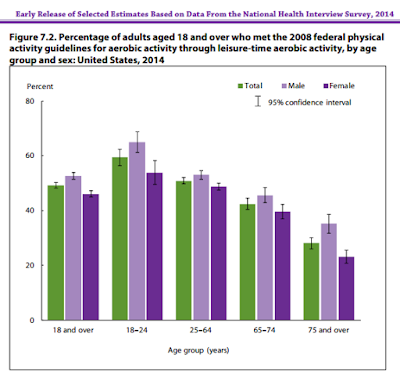One of Life’s many miracles is that of gas exchange between air and the blood in our lungs. This amazing feat of Creative Engineering enables us to use the Oxygen from air for cellular respiration; as well as off- gassing the resultant Carbon Dioxide to balance the blood pH.
The star of this show is the humble Alveoli. We have approximately 700 Million of these tiny bubbles lining our lung surface.(5) At the capillary level, these babies bring Red Blood Cells into close contact with the air we breathe—handing off CO2 for O2 with each breath.
With such an important role in quality of life, when things go wrong with the respiratory system it really shows. Some common problems include:
Some stats on Asthma from the Allergy and Asthma Foundation of America: (4)
Like so many other health challenges, Asthma is not just a single cause, easily fixed issue. We believe it takes a Holistic view of ourselves to be healthy. Toxin reduction, a diet of healthful (non GMO, organic, and locally produced) foods, stress reducing productive exercise, and naturally supportive supplements (essential oils, herbs, vitamins, and minerals) can support long term health.
Lets take a look at a few examples of each applied to supporting the respiratory system:
Toxin Reduction:
- ARDS- Acute Respiratory Distress Syndrome
- Pneumonias- infection of the lungs caused by bacteria, virus, fungus, etc.
- Lung Cancers
- Chronic Bronchitis
- Asthma- a chronic inflammatory condition where lung passages are temporarily constricted. It is this phenomenon I want to focus on for a moment.
Some stats on Asthma from the Allergy and Asthma Foundation of America: (4)
- According to the Centers for Disease Control, 1 in 14 people have asthma.
- About 24 million Americans have asthma. This is 7.4 percent of adults and 8.6 percent of children...6.3 million people under the age of 18.
- Asthma has been increasing since the early 1980s in all age, sex and racial groups.
- Asthma is the leading chronic disease in children. It is also the top reason for missed school days.
- Asthma is more common in adult women than adult men.
- Asthma is more common in children than adults and more common in boys than girls.
- Almost 6.3 million people with asthma are under the age of 18.
Like so many other health challenges, Asthma is not just a single cause, easily fixed issue. We believe it takes a Holistic view of ourselves to be healthy. Toxin reduction, a diet of healthful (non GMO, organic, and locally produced) foods, stress reducing productive exercise, and naturally supportive supplements (essential oils, herbs, vitamins, and minerals) can support long term health.
Lets take a look at a few examples of each applied to supporting the respiratory system:
Toxin Reduction:
- Use allergen reducing air filters on your HVAC system
- Get to Cleansing (aka detoxing). Start with your colon. Try the 5 Day Nutritive Cleanse.
- Don’t use toxic chemical cleaners in your home! There are safe, effective alternatives…like Thieves.
- Get away from the S.A.D. (standard American diet).
- Eliminate sugar from your diet. It doesn't have to be cold turkey- take a step!
- Shop the perimeter...better yet shop your farmer's market.
- Increase carotenoids and anti-oxidants (3). Try Ningxia Red
- Obese people are more likely to develop asthma (4)
- Take a ½ hour walk or bike ride with your spouse and kids 5 days a week.
- Plant a garden and have a Saturday garden/yardwork family tradition.
- Lose weight naturally and sustainably. Try the Slique system.
- R.C., Breathe Again, Raven, Dorado Azul essential oil blends
- Diffuse Eucalyptus, Cobaiba, Myrtle, Idaho Balsam Fir single oils
- Ningxia Red, Inner Defense, Detoxzyme, Mineral Essence, ImmuPro supplements
Remember, ‘Health is a Journey’... One foot in front of the other!
1. Anandan C, Nurmatov U, van Schayck OCP, Sheikh A. Is the prevalence of asthma declining? Systematic review of epidemiological studies. Allergy 2010; 65: 152–167. https://www.ncbi.nlm.nih.gov/pubmed/19912154
2. David R. Jacobs Jr. and Ravi Kalhan "Healthy Diets and Lung Health. Connecting the Dots",Annals of the American Thoracic Society, Vol. 13, No. 5 (2016), pp. 588-590.
doi: 10.1513/AnnalsATS.201601-067ED
3. J Expo Sci Environ Epidemiol. 2016 Mar-Apr;26(2):180-8. doi: 10.1038/jes.2015.57. Epub 2015 Sep 9. Ambient air pollution and emergency department visits for asthma: a multi-city assessment of effect modification by age. Alhanti BA1, Chang HH1, Winquist A2, Mulholland JA3, Darrow LA4, Sarnat SE2.
4. http://www.aafa.org/page/asthma-facts.aspx
1. Anandan C, Nurmatov U, van Schayck OCP, Sheikh A. Is the prevalence of asthma declining? Systematic review of epidemiological studies. Allergy 2010; 65: 152–167. https://www.ncbi.nlm.nih.gov/pubmed/19912154
2. David R. Jacobs Jr. and Ravi Kalhan "Healthy Diets and Lung Health. Connecting the Dots",Annals of the American Thoracic Society, Vol. 13, No. 5 (2016), pp. 588-590.
doi: 10.1513/AnnalsATS.201601-067ED
3. J Expo Sci Environ Epidemiol. 2016 Mar-Apr;26(2):180-8. doi: 10.1038/jes.2015.57. Epub 2015 Sep 9. Ambient air pollution and emergency department visits for asthma: a multi-city assessment of effect modification by age. Alhanti BA1, Chang HH1, Winquist A2, Mulholland JA3, Darrow LA4, Sarnat SE2.
4. http://www.aafa.org/page/asthma-facts.aspx
5. 1. Roberts, M., Reiss, M., Monger, G. (2000) "Gaseous exchange."Advanced Biology. Surrey, Nelson. p. 167.

























